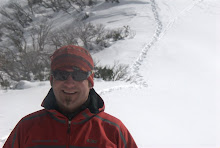The best first aid courses for the outdoors have always been ones presented in a wilderness context
- improvising first aid materials from stuff you already have with you (do more with less)
- provide you with the knowledge and skills necessary to provide extended patient care (you could be stuck in the bush with your patient for hours, overnight, days, etc). Urban based courses like St Johns and Red Cross as a rule do not present from this perspective and their trainers are generally not from an outdoor guding background.
Anyway ones of the providers of one of these courses I distinctly remember had a motto which featured prominently on their trademark hikers' coffee mugs which they also sold. This motto read:
"Hydrate or Die"
The more courses I completed, the more this motto struck me as making sense. The more you study first aid, the more it becomes apparent how effective adequate hydration is in preventing a plethora of miscellaneous ills & ailments. And nowhere is this more apparent than in summer.
When I worked as a walking guide for 20 years for school Outdoor Education groups, I had a stock list of responses used for a multitude of student presentations / complaints. This is a useful tool to have in your leaders kitbag of tricks.
Students would typically present complaining of a headache. My stock response always revolved upon getting them to "drink more water." Not gulp it, but slowly sip a good litre an hour for the next hour or two or three ...
Of course that wasn't what they wanted to hear. What they really wanted was a Panadol or some similar magic tablet. But what their body needs is to be rehydrated. That pain in your head is telling you something. Yes Johnny pain is your friend.
So with the weather heating up and keen walkers heading out, one of the best things we can do to avoid the onset of heat illness (heat exhaustion and heat stroke or hyperthermia) is to stay hydrated. It's not that hard but it does require a strategy just as avoiding hypothermia requires a strategy.
Here's some hydration tips for walkers:
- start the day with a full tank. Make sure you're properly hydrated before you start walking.
- know the signs & symptoms of dehydration. Key sign: when you are adequately hydrated, your urine should be clear and copious. So go on,have a "pee and see."
- sip water regularly dont gulp water irregularly
- make it easy to sip and walk at the same time. Camelbaks and similar hydration packs are popular for a reason and you don't need to wear ear buds and like hip hop to use one either. They enable you to suck water when you're walking (or skiing but then you need to avoid the hydration tube freezing up but let's leave tha tissue till winter approaches). This really makes it easy to stay hydrated. You don't have to stop the group to get out your water bottle; you don't have to worry about catching up to the group; you don't have to ask someone to get your water bottle off your pack for you. You are in control and can drink when you like. And drink you will. It's amazing how quickly you can drain a 2 litrle bladder.
- take enough water to meet your needs without overdoing it. For me this is 3 litres. I carry a 2 litre Camelbak with the hydration tube conveniently located on my shoulder strap. Mine has a valve enabling me to close the water off, a useful feature. I also pack a one litre bottle either inside my pack or secured externally so it can't swing or drop of my pack.
- if leading a group, call rest stops frequently. Allow those in the group without hydration packs the chance to stop and drink. Chances are if they haven't got a Camelbak or similar, they will be not drinking for one or all of the reasons outlined earlier. If you don't let them drink, they will become more dehydrated and you may have problems later in the day.
So when you're out there walking this summer, drink, drink and be merry!
Happy New Year and Happy Trails
Want more info? Read this great article

No comments:
Post a Comment